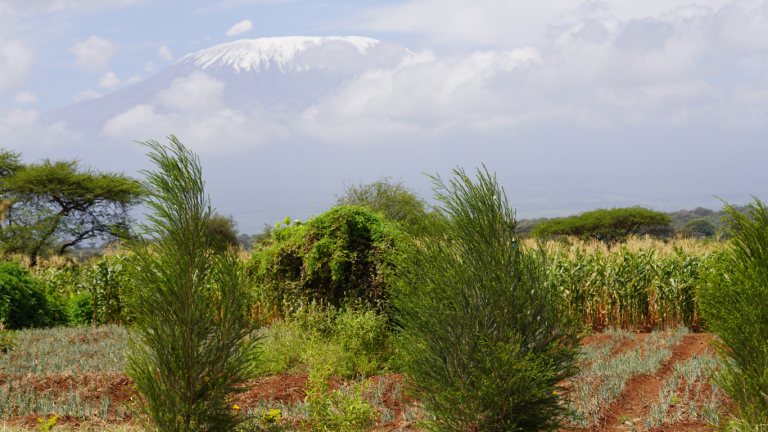
Have you ever noticed your tomato plants struggling after years in the same spot? Or maybe your carrots seem stunted despite regular watering? Have you ever wondered why farmers don’t just plant the same crop year after year? The answer lies in a powerful practice called crop rotation.
Here at our organic farm, we embrace a practice called crop rotation, which is the strategic planting of different crops in the same area over time. This age-old technique, dating back thousands of years. Let’s delve into the “whys” and “hows” of crop rotation and how it contributes to a healthy farm and a healthy planet.
What is Crop Rotation?
Crop rotation is a farming technique where different crops are planted in a sequential order over several seasons or years in the same field. Instead of planting the same crop in the same spot year after year, farmers rotate the types of crops grown to maintain soil health and fertility.
Crop rotation is like giving your farm a diverse and nutritious diet. By planting different types of plants in succession, we create a balanced ecosystem in the soil. Each crop has unique needs and benefits. Some, like legumes (beans, peas), fix nitrogen in the soil, a vital nutrient for many plants. Others, like deep-rooted vegetables (carrots, parsnips), help break up compacted soil, improving drainage and aeration.
Crop Rotation & Permaculture: A Match Made in the Farm
Organic permaculture emphasises creating a self-sustaining, closed-loop system. By rotating crops, organic farms can mimic natural ecosystems, promoting soil health, biodiversity, and resilience.
Promoting biodiversity: A diverse range of plants attracts beneficial insects and pollinators, creating a thriving natural balance.
By nurturing the soil naturally, crop rotation reduces the need for external inputs, a key tenet of organic permaculture.
Crop rotation allows for the integration of cover crops that fix nitrogen and replenish the soil, minimising external reliance.
History:
Crop rotation dates back millennia, with evidence suggesting its use in ancient Mesopotamia and Egypt. It has been practised for centuries, dating back to ancient civilisations such as the Greeks and Romans. Farmers intuitively understood the importance of diversifying their plantings to maintain soil health, prevent soil depletion and maintain productivity.
From the three-field system of Europe to the innovative practices of indigenous communities, crop rotation has played a crucial role in sustainable agriculture.
Why Does Ambokili Farm Practice Crop Rotation? The Power of Diversity:
Maintaining Nutrient Rich Soil: Different crops have varying nutrient needs. Rotation prevents the depletion of specific nutrients while allowing the soil to naturally replenish them. This creates a more balanced and fertile environment for plants.
Diverse root structures from various crops help aerate the soil, improve drainage, and promote beneficial microbial activity, all crucial for a thriving ecosystem.
Pest and Disease Management: Many pests and diseases target specific crops. By rotating crops, we disrupt their life cycles, making it harder for them to establish themselves and harm our harvests. Monoculture (planting the same crop repeatedly) attracts pests that specialise in that plant. Rotating crops disrupts pest and disease cycles, reducing the need for pesticides and fungicides, leading to a healthier ecosystem for your crops.
Weed Control: Certain crops, like leafy greens, are notorious weed magnets. Planting them in rotation with crops that suppress weeds naturally, like squash or potatoes, helps keep your farm weed-free organically.
Building Better Soil Structure: Plants with different root structures contribute to improved soil structure. Deep-rooted plants help loosen compacted soil, while shallow-rooted plants enhance the upper layers, creating a more hospitable environment for all your crops.
Benefits of Crop Rotation:
Improved Soil Health: Enhances soil structure, fertility, and microbial activity.
Sustainable Pest Management: Reduces reliance on pesticides by disrupting pest and disease cycles.
Enhanced Biodiversity: Supports diverse ecosystems and habitats on the farm and a diverse range of plants attracts beneficial insects and pollinators, creating a thriving natural balance.
Nutrient Cycling: Optimises nutrient availability and reduces nutrient runoff and leaching.
Climate Resilience: Mitigates the impacts of climate change by enhancing soil carbon sequestration and water retention.
Reduced Environmental Impact: By minimising the need for chemical fertilizers and pesticides, crop rotation protects our water sources and promotes a healthier environment for everyone.
Improved Food Quality: Healthy soil leads to healthier crops. This translates to more nutritious and flavourful fruits and vegetables for you and your family.
Sustainable Future: Crop rotation promotes long-term soil fertility, ensuring a bountiful harvest for generations to come.
Crop rotation is a simple yet powerful practice that benefits both our organic farm and the planet. By embracing this age-old technique, we can ensure a sustainable future for our food production systems and contribute to a healthier world for all. Together, we can support sustainable and organic permaculture methods that nourish both the earth and its people.
Embrace the Rotation Revolution!
